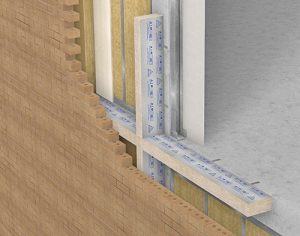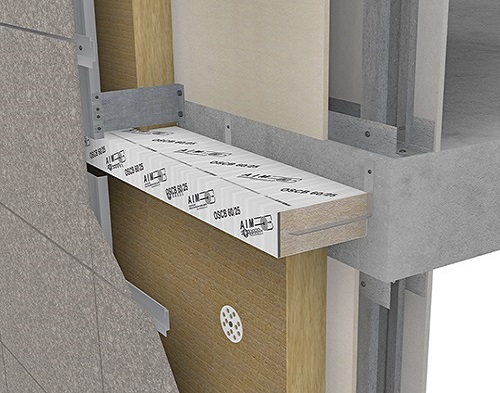Making a large building safe with fire compartments.
So, what is a fire compartment?
When we create fire compartments, we are taking a building that would be a large and unmanageable risk in a fire situation and breaking it down into smaller and more manageable zones or compartments.
Typically, in a residential building, each dwelling will form its own fire compartment as will the escape routes from the building. The compartments are created by incorporating fire resisting walls and floors within the construction; quite simple in its own right but when you start to factor in services that have to pass horizontally and vertically through the building, and cavity barriers in the external wall cavities completing the compartment lines to the external envelope, fire compartments can be a complex issue and the correct product selection is essential.
We can all appreciate that fire compartments give occupants time to escape from the building, or in the case of a ‘stay put’ policy it means the residents can stay in their protected compartment in relative safety from a fire elsewhere in a building. Their function is essential to the safety of a building in the event of a fire.
The position of the fire compartment lines are set out within Approved Document B of the Building Regulations (Fire Safety) and this document also sets the minimum fire performance (in some instances as low as 30 minutes integrity and 15 minutes insulation).

AIM - Cavity Wall Barrier
Other requirements are also considered such as the subdivision of ‘extensive cavities’ requiring cavity barriers at a maximum of every 20 metres in very large buildings which may fall to 10 metres depending on the buildings final purpose. This forms the basis of the buildings fire strategy which will also consider evacuation times including any special needs for those who need to evacuate.
Not only does this time allow occupants to escape but it gives time for the fire service, who typically arrive within ten minutes of the alarm being raised, to safely enter the building and start to extinguish the fire without risk of structural failure for a period of time.
The fire compartment should not only restrict the passage of fire through the building by acting as a barrier to flame and heat but it must also restrict the passage of smoke through the building; smoke is the biggest killer in modern fires as plastics and manmade materials give off thick toxic smoke such as hydrogen cyanide.
This has been highlighted in several fires where the occupants have faced a ‘wall of smoke’ making their escape almost impossible.
Whilst the minimum performance of 30/15 is stated within the regulations there are many other factors that may require enhanced levels of performance such as:
· The height of the building and how long it may take to evacuate the building; some buildings have staged evacuation plans so not everyone will exit the building at the same time.
· The purpose group of the building; does the building contain occupants with complex needs or mobility issues resulting in longer evacuation times.
· The risk factor of the building; does the building contain high risk areas such as storage or kitchen areas requiring enhanced levels of protection.
More commonly, insurance companies are becoming involved at the early stages of design and construction.
The greater the level of protection afforded by the fire compartment the lower the insurance premium; insurers want to lower their risks and reducing the risk of fire spread for a greater period of time can lead to lower insurance premiums.
For any fire compartment to be effective the fire stopping, and cavity barriers must be well installed.
Several third-party certifications schemes are available for installers but many of these schemes are generalised and tend to focus on the internal fire stopping: pipe collars and wraps, penetration seals, coated batts, intumescent pillows, intumescent mastics and suchlike.
Schemes do exist for the installation and inspection of external wall cavity barriers but these tend to be very generalised and the guidance for one manufacturers product will not apply to another manufacturers product.
To overcome the common issues of ‘assumption’ regarding an installation or ‘we’ve always done it this way’ AIM offer bespoke training on the installation of our external wall cavity barriers and internal fire barriers ensuring installers have the correct knowledge and skills to competently fit our products.
Not only do we give guidance on the installation, but we explain the basic regulations, how the products are tested, how and why they are installed and how not to make the common mistakes that can and will lead to an ineffective fire compartment.
Our Technical Support Manager Kevin Blake will attend site to provide training and to monitor the quality of installation and provide site reports giving comfort that the manufacturer has physically checked for problems.

AIM's Open State Cavity Barrier

Compartmentation illustration showing how AIM's OSCBs and Wall Cavity Fire Barriers combined to provide an overall fire stopping solution
As a manufacturer of passive fire protection products, we have a responsibility to provide this information and to generally share our knowledge and experience with designers and installers to improve our industries standards.
